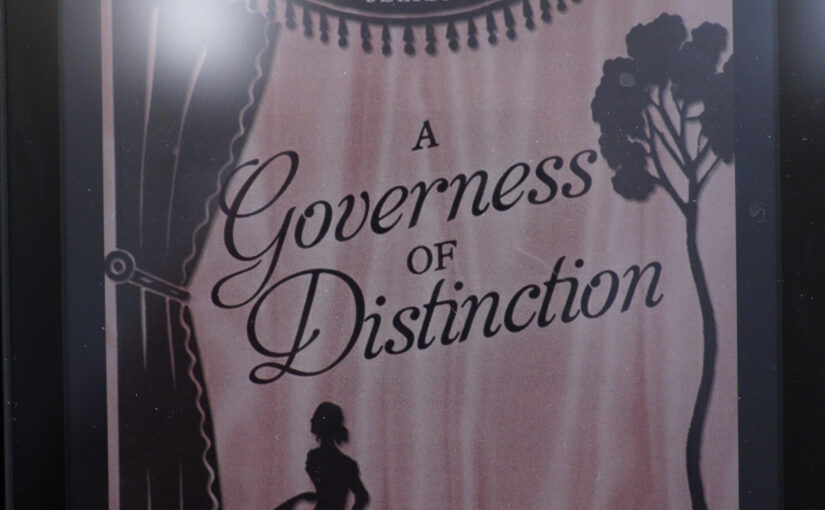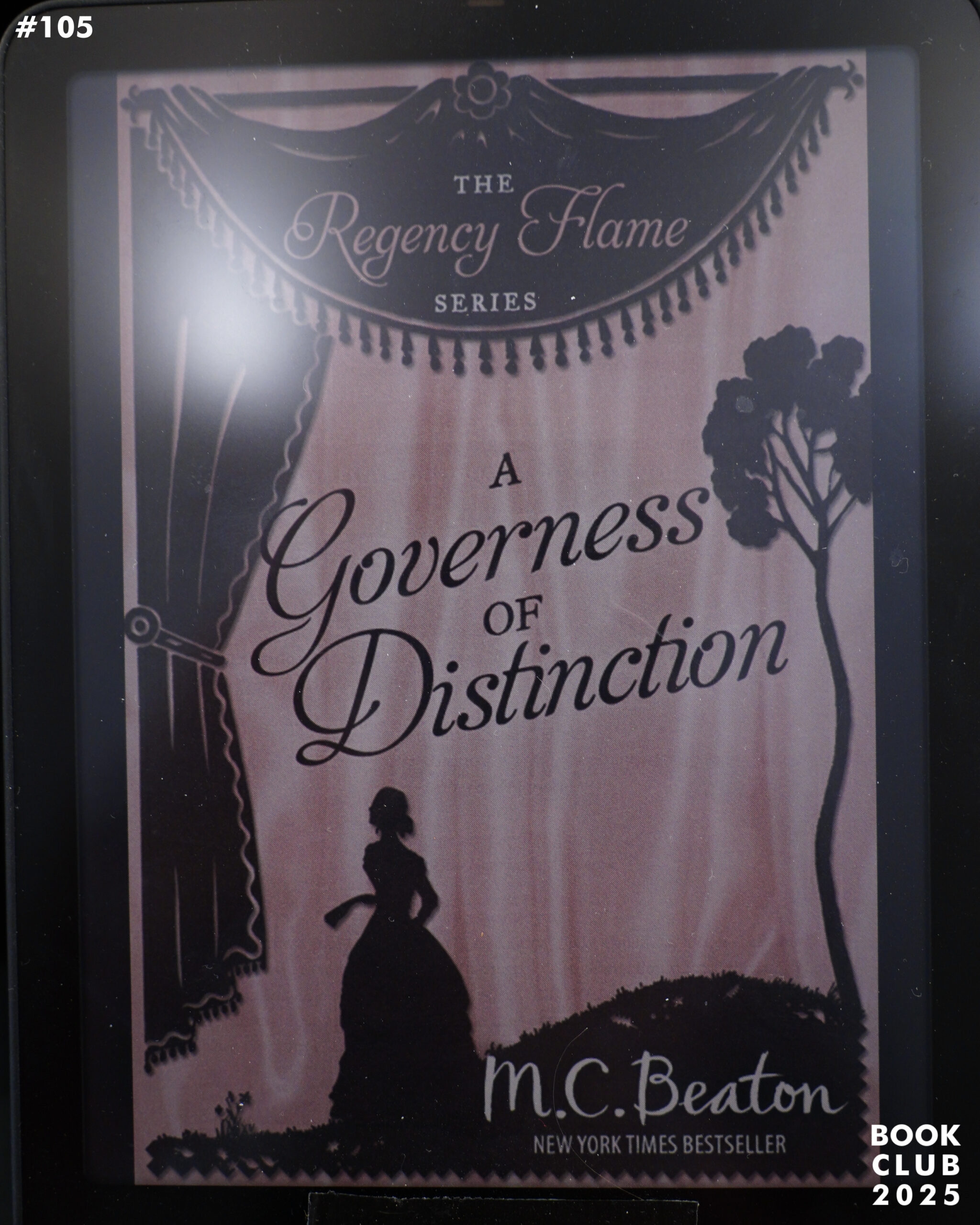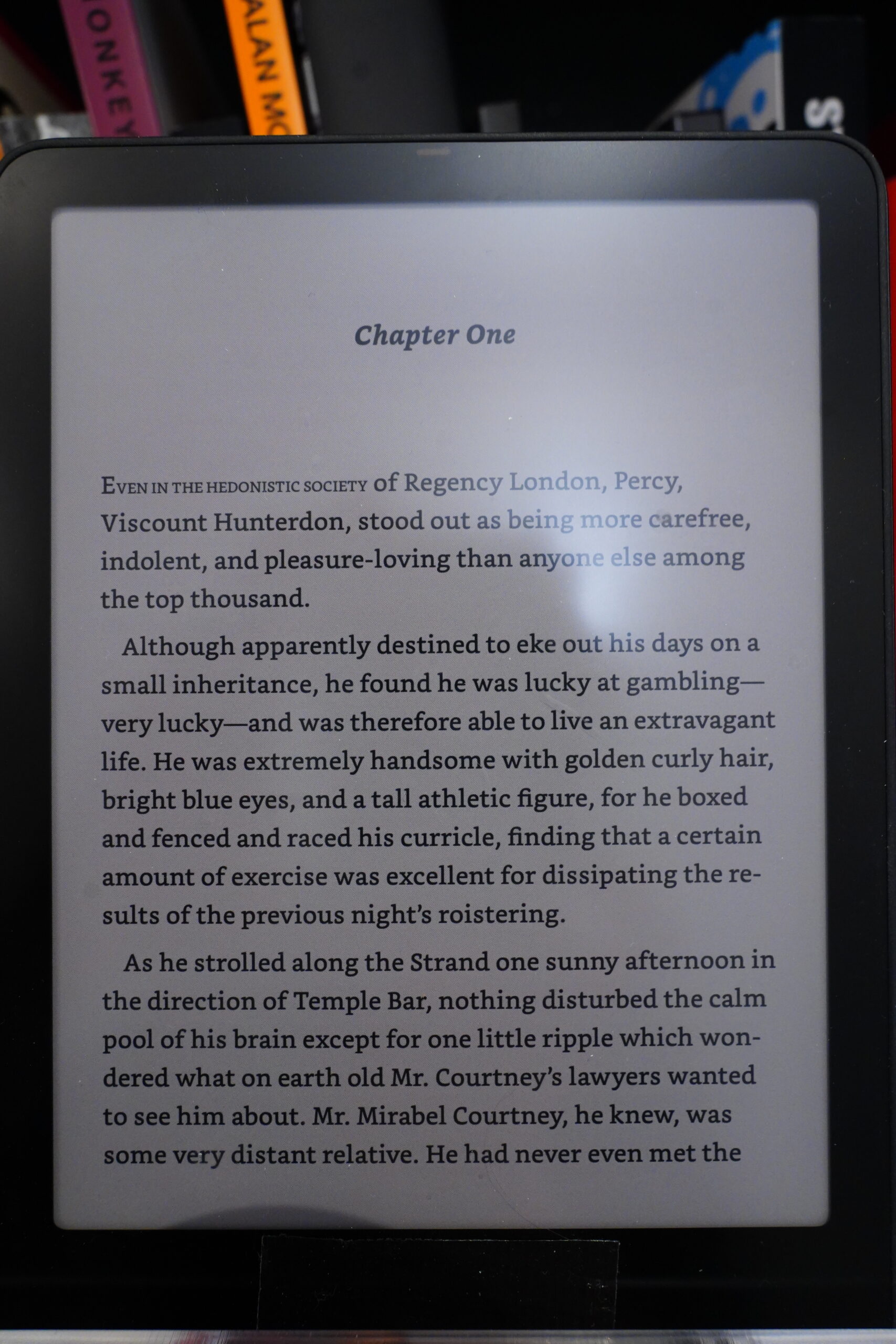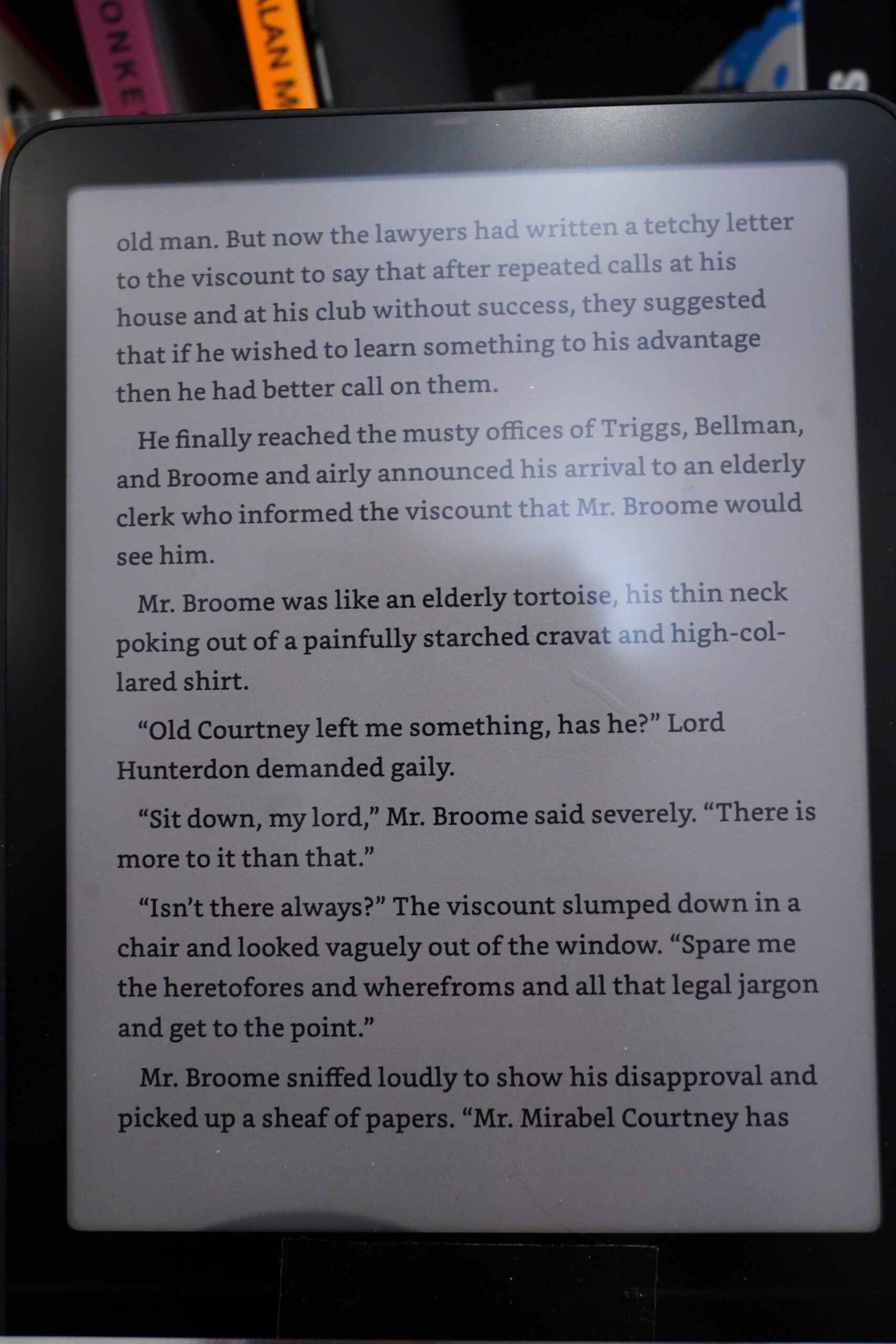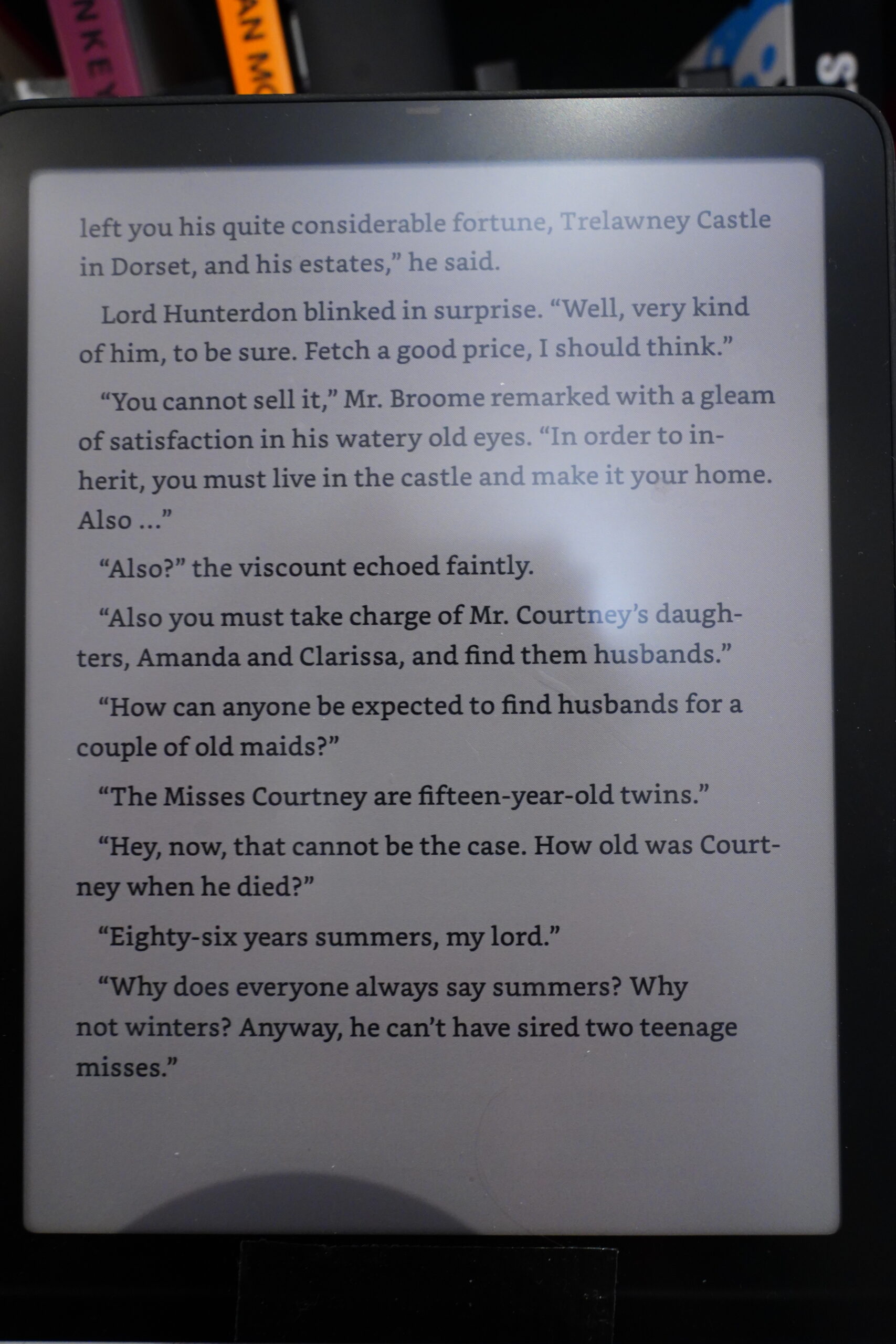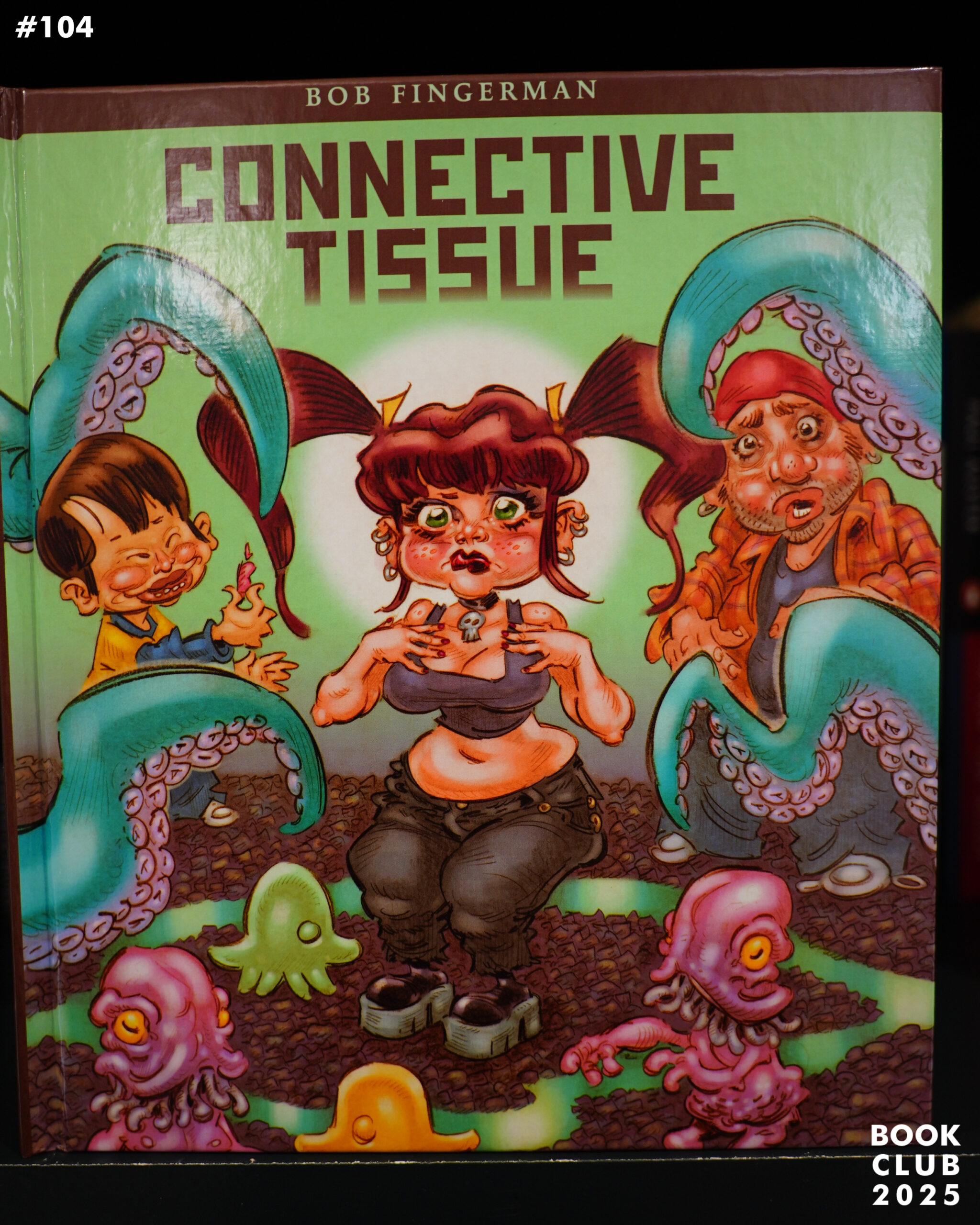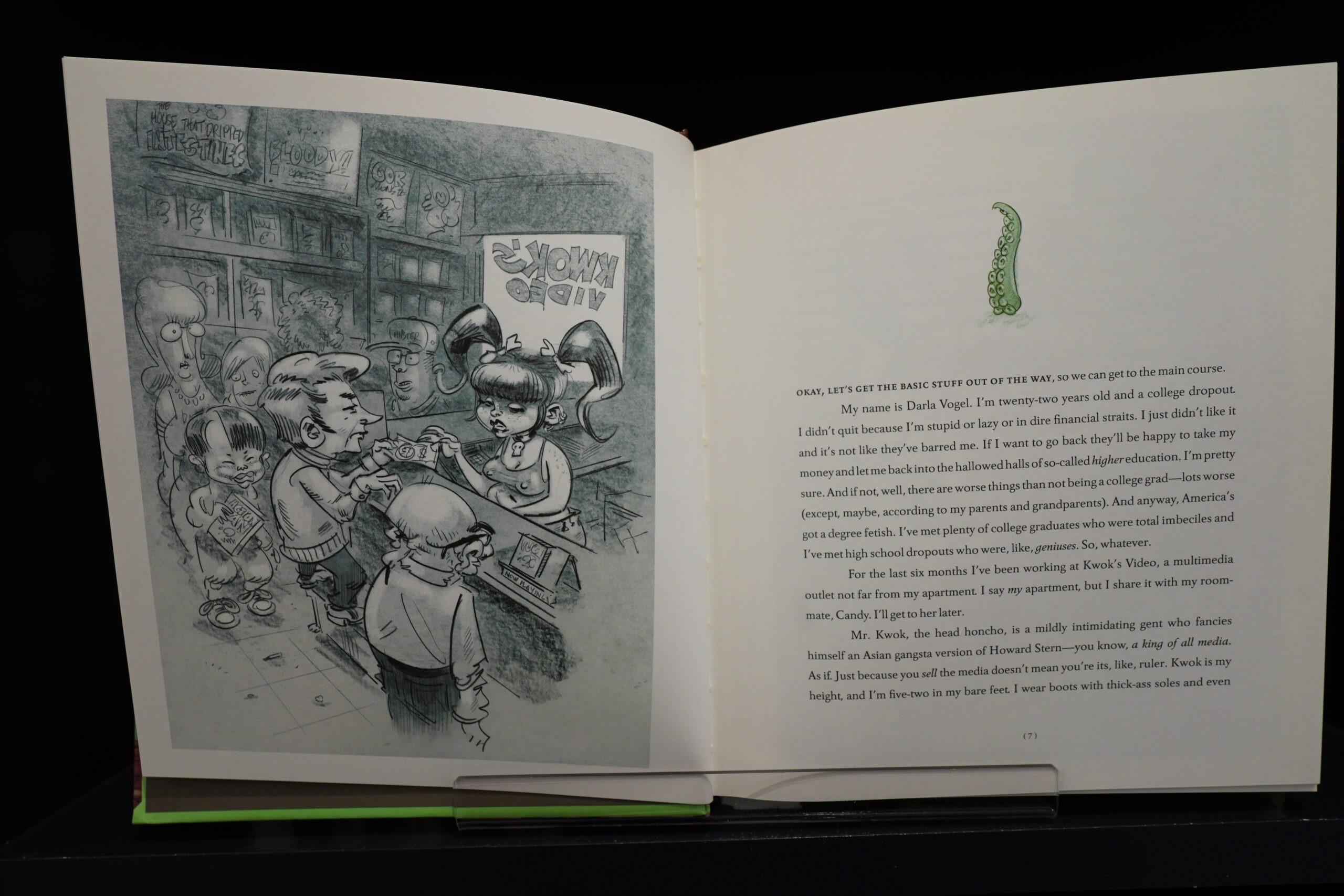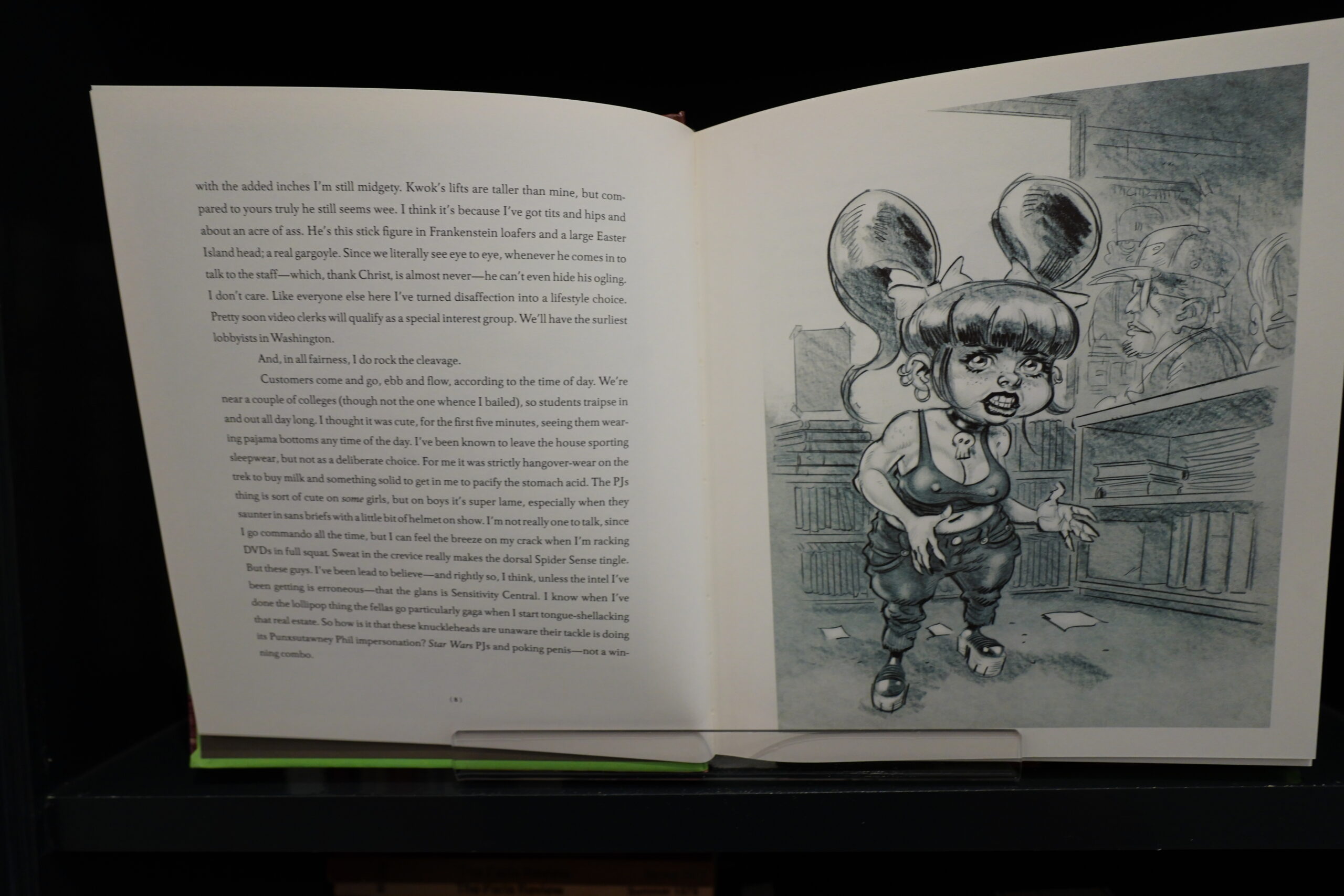Geordie Greep was so much fun.
Book Club 2025: A Governess of Distinction by M. C. Beaton
I’ve been reading this on my phone over the last month or so, whenever I had a couple minutes to kill while out and about.
I think I said that the previous Beaton Regency romance was the most preposterous one yet, but this is even better. It’s pure popcorn — there’s a poor, but noble governess, evil relatives and evil children, smugglers, murder attempts, and (of course) a romance.
100% silly, very brisk, and very entertaining.:
I appreciate the audacity factor of this book. Chesney tapped into some screwball comedy vibes and I applaud her for it.
A Governess of Distinction () by M. C. Beaton (buy new, buy used, 3.77 on Goodreads)
Music Festival
Book Club 2025: Connective Tissue by Bob Fingerman
I have to admit I bought this by mistake (in 2009) — I assumed it was a comic book, but it’s not. So it has remained unread until now.
It’s much better than I imagined it would be, really. It’s basically Alice in Wonderland, but by Bob Fingerman, so there’s a lot of squishy things. And tentacles.
About half the pages are illustrations, and I guess they’re the main attraction here. They don’t exactly add a lot to the text — there’s no playful interaction going on, which I find pretty odd for somebody that mainly does comics.
It’s pretty entertaining, but it feels like a trifle: The text is quite digressive, and while it’s humorous, it’s not at any point actually funny.
Connective Tissue (2009) by Bob Fingerman (buy used, 3.44 on Goodreads)






